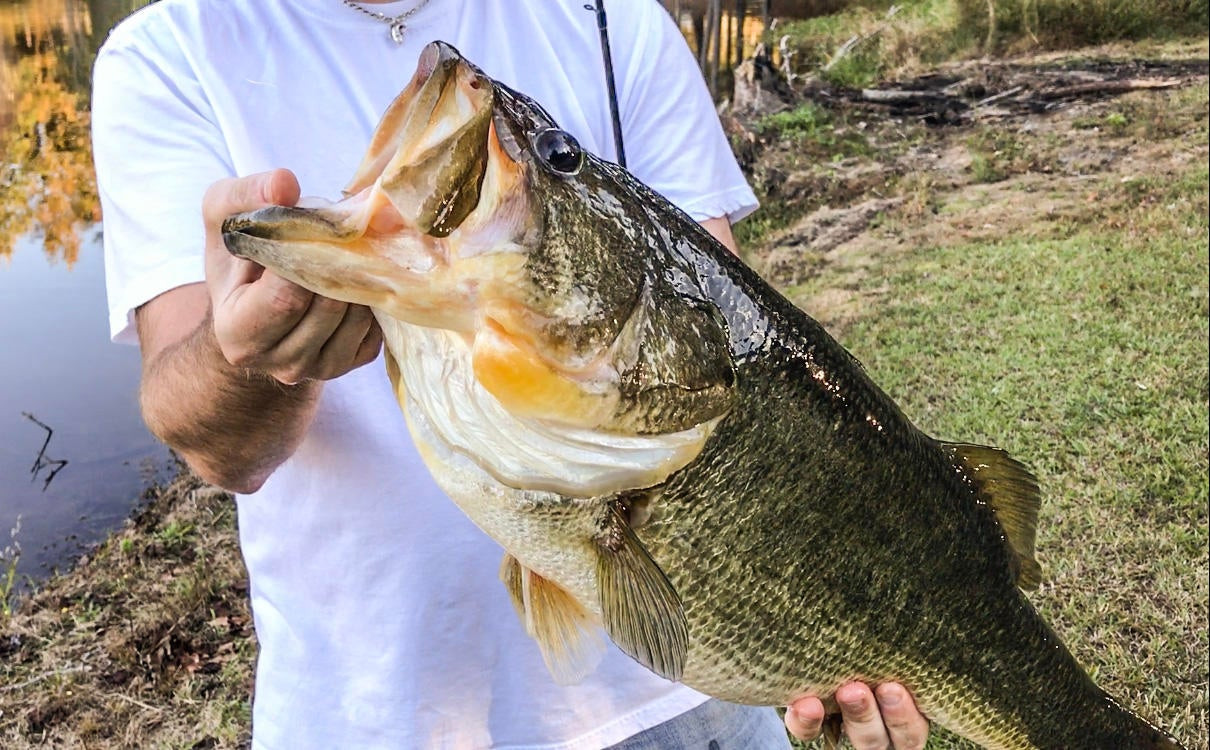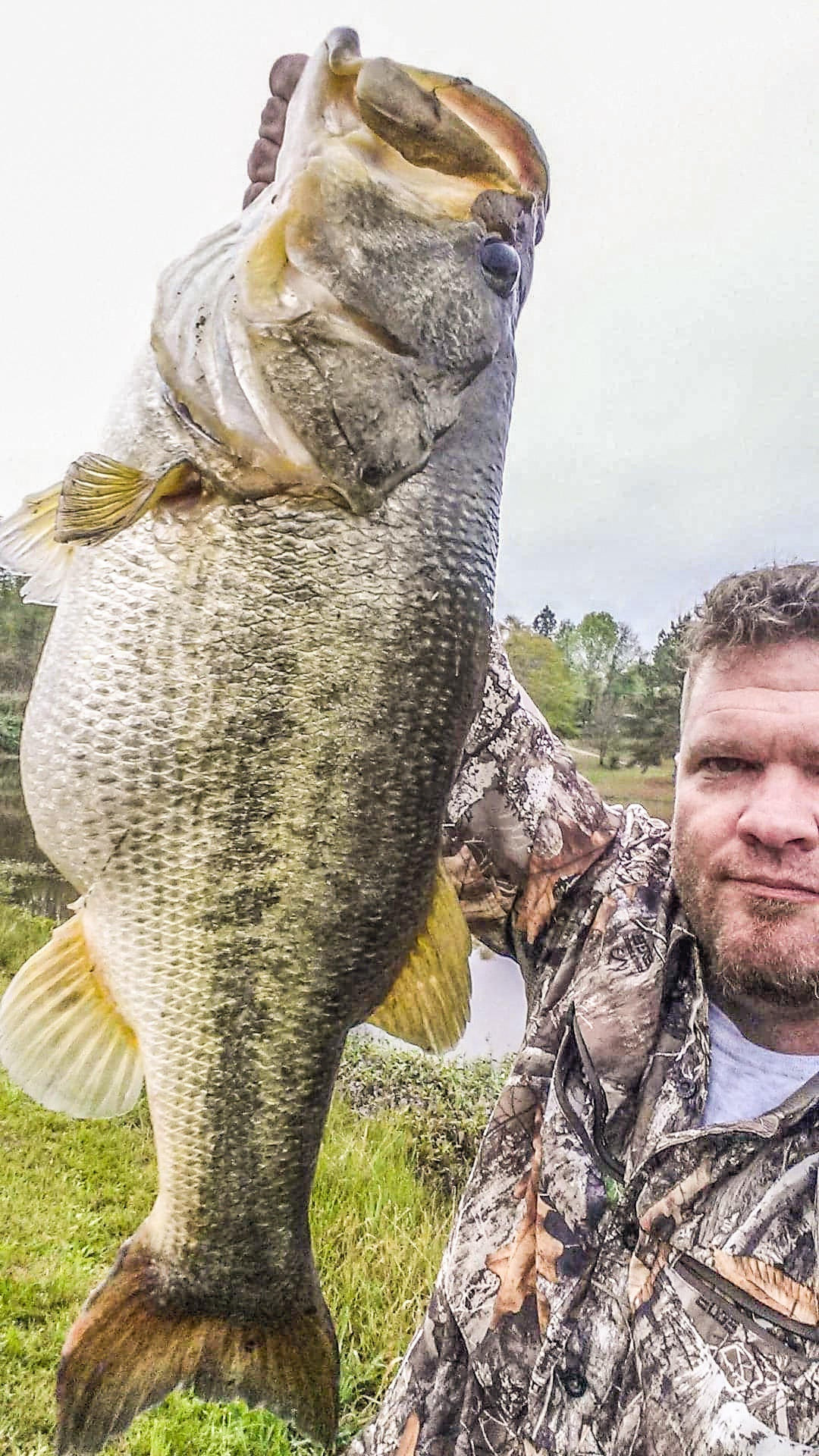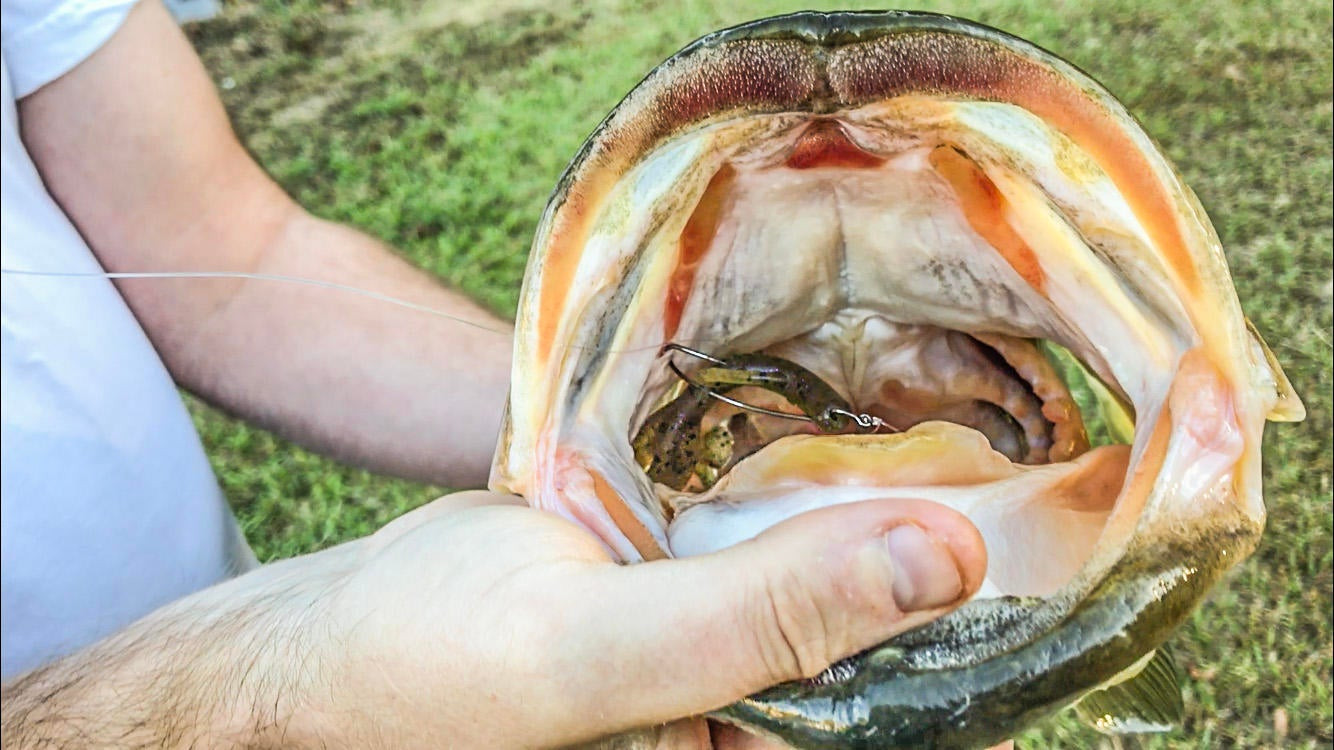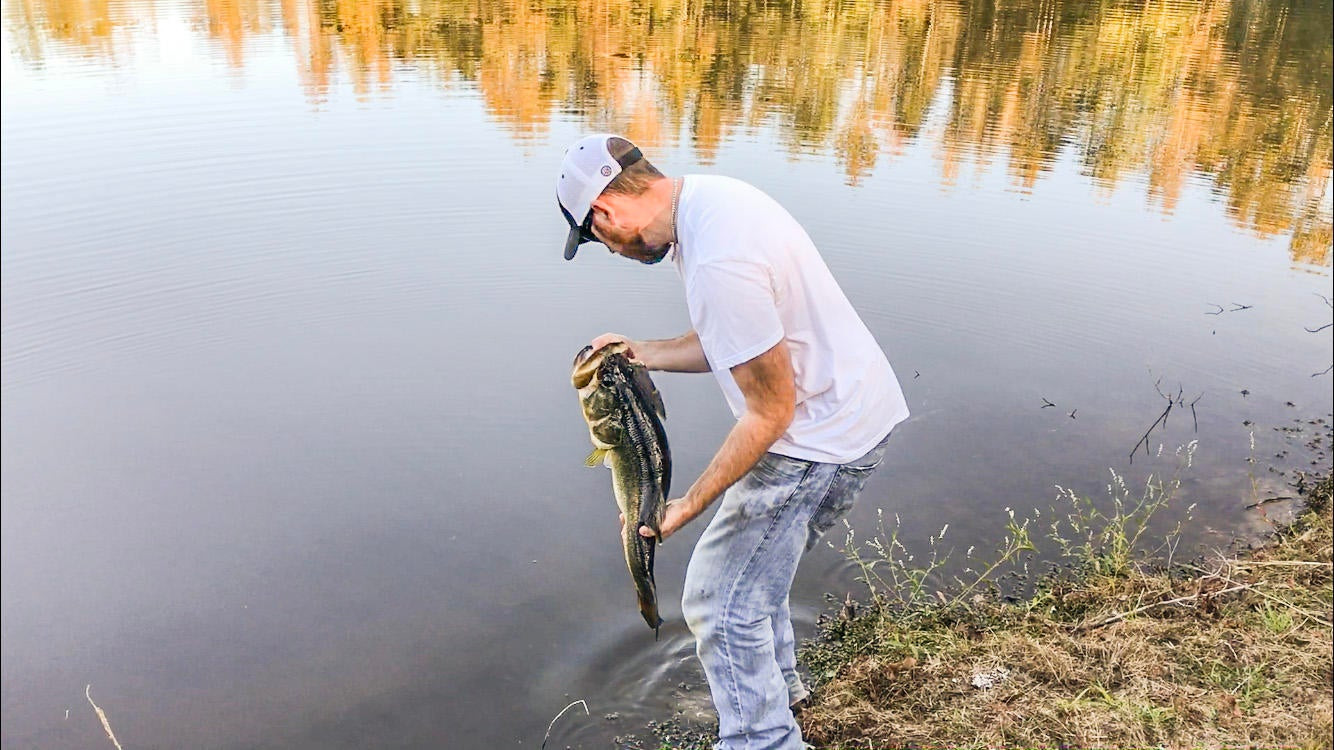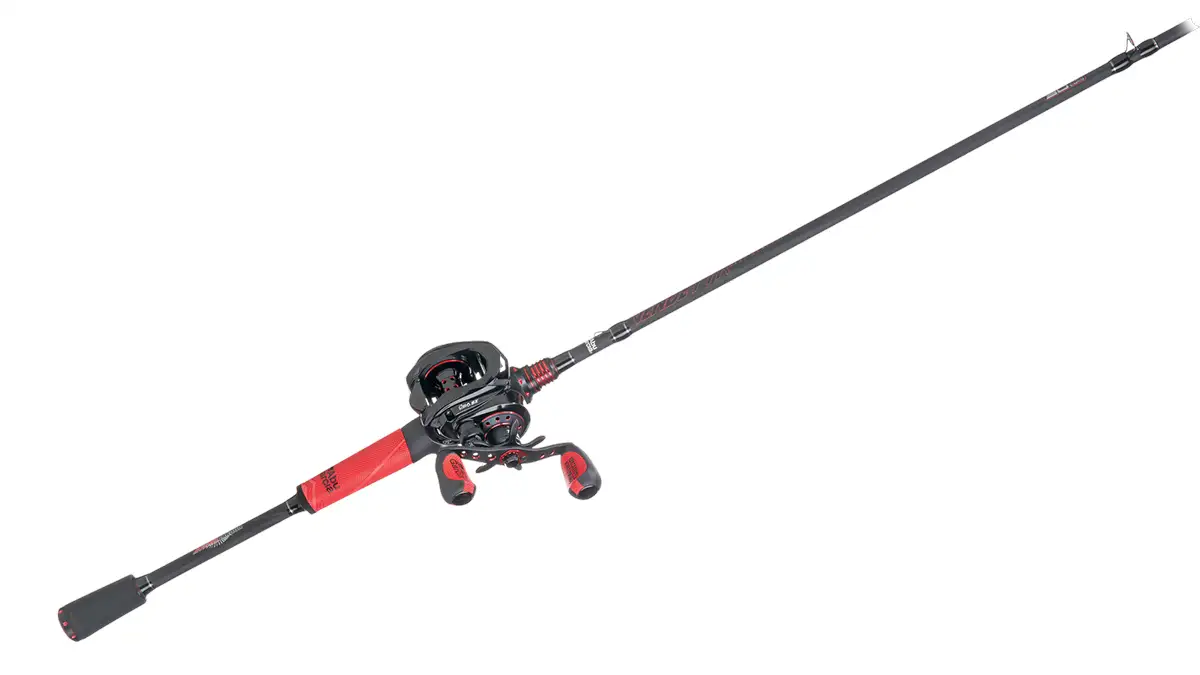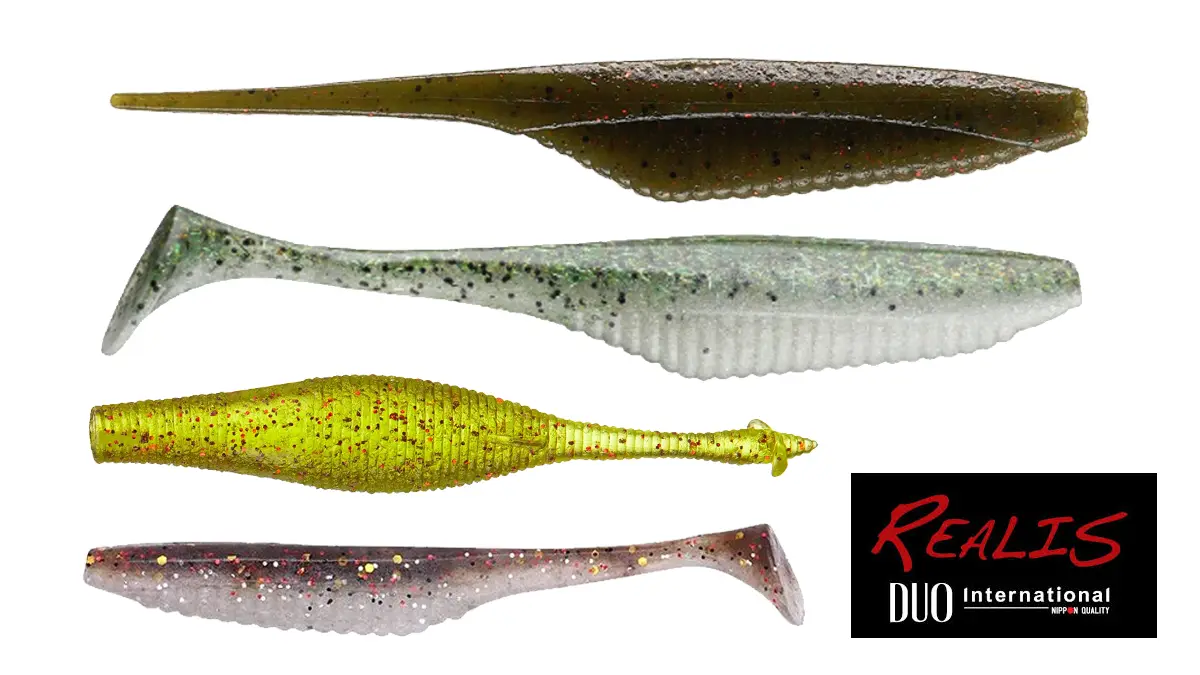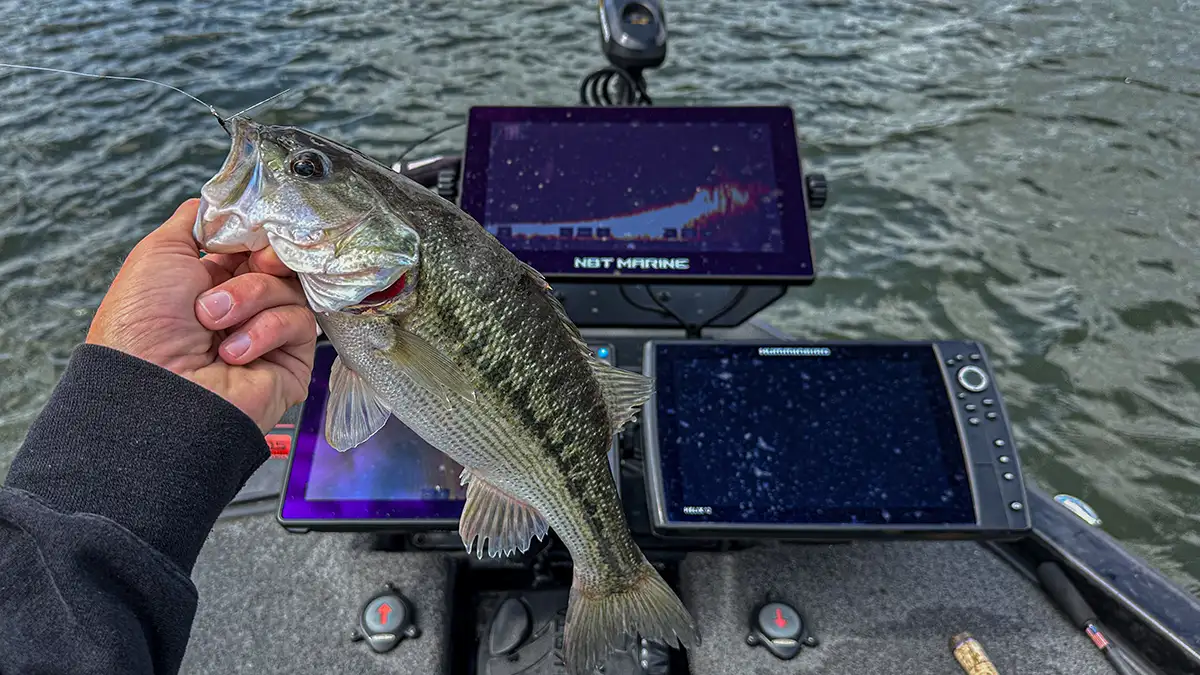I spent the large majority of my childhood and adult life chasing that elusive double-digit bass. I worked like a dog to save money for new fishing lures and better fishing rods, but after a lot of trial and error, I realized it wasn’t necessarily about the gear or the money spent. It was about conservation.
Two recent catches have proved to me the effectiveness of catch-and-release bass fishing. We’ve always been told it works, but experiencing something like this has really put things into perspective for me.
The first catch
I’m not going to go into a whole bunch of details because I’ve chronicled the entire catch in this article. But I’ll give you the condensed version.
On the evening of November 2, 2017-not really the time of year you imagine catching your first double-digit bass-I was bank fishing at a pond I have managed for many years. I was talking with the pond owner about deer hunting and mindlessly pitching a Zoom Baby Brush Hog to the exact same limb of a laydown for about 30 minutes. I didn’t expect to catch anything. I was chewing the fat with an old buddy.
After countless pitches, I had a very small “peck” at the end of my line. I figured it was a bluegill, but as it started slowly swimming towards deep water, I knew something special was happening. I set the hook and she came up and jumped-or tried to jump-and there wasn’t a doubt in my mind that she was over 10 pounds. It’s just like meeting your spouse for the first time. You just know.
To make a long story short, I finally managed to land her and she weighed 13.14 pounds. I took measurements and Steven Bardin, a leading fisheries biologist, verified the weight with the numbers I gave him. I finally did it-I finally caught a giant.
I made a concerted effort to be delicate and very careful while handling her. I didn’t hold her vertically because I wanted to avoid any additional strain on her jaw. I cradled her tail and I was careful not to torque her jaw. After roughly 30 seconds out of the water and several dips back into the pond between pictures, I swam her back and forth with my hands and she took off alive and well. She lived to fight another day.
I couldn’t believe it
17 months after my catch-long after I mounted her fiberglass replica over my office desk-I was at my small-town barber shop getting a haircut and a beard trim. One of the barbers, Brad, is the only other person who has permission to fish this pond. As I walked in the door he ran up to me with his eyes bigger than ping pong balls and his phone in hand.
“You ought to see the ded gum bass I caught out of there yesterday,” he yelled. “Caught her crappie fishing on 6-pound line and an ultralight!”
He showed me the photos on his phone and I couldn’t believe what I saw. It was the exact same fish I caught 17 months ago. Except she was even bigger.
Now, before you run off and call me a liar, this fish is incredibly unique and very identifiable. As you can see in the photos, she has bright yellow coloring surrounding her gill plates and hardly any dorsal fin. Not to mention, she has a faint spot-almost like redfish-right on her tail. We compared videos and photos on our phones with the whole barber shop gathered ’round. Without a doubt it’s the same fish.
I was tickled pink and couldn’t stop talking about it for the rest of the week. Like I said earlier, we always hear about catch and release working. It’s a known fact in bass fishing. But man, when you witness the results of it first-hand, it’s an incredible feeling. She was released again for the second time and Lord willing, a young kid can catch her next time.
Big takeaway on location
In addition to the importance of catch and release, these two catches reiterated something I’ve written about until I’m blue in the face.
Big bass prefer shallow cover adjacent to deep water.
The tree from which I caught that giant was tailor-made to hold a huge bass. The base of it was in two feet of water and the branches extended over a break line and hovered over 10 feet of water. That big bass had the best of both worlds right at her proverbial fingertips-she could quickly move up to feed and corral unsuspecting bluegill before sliding out to towards the deeper end of the tree when she’s inactive. With a single kick of her tail, she could completely change her living situation.
When Brad caught her 17 months later, she was on the only other similar tree in that pond. It was on the steepest bank with the base in three feet and the branches extending over 12 feet.
That’s not just coincidence. That’s the drawing power of shallow cover with adjacent deep water.
My final thoughts on all of it
I think there is a strong parallel between bass fishing and deer hunting. You can’t shoot big bucks if you kill the young ones. Big bucks have great genetics-that’s how they get so big. Allow them to reproduce as much as they can and you’ll have a much healthier and impressive herd on your property.
I’m a firm believer that bass fishing is the same way-and there’s plenty of scientific evidence to support that. Look at the giants they’re growing and re-stocking with the Texas ShareLunker program. Big bass also have excellent genetics. The more successful spawns these big females have, the more they spread their genetics. So if you can keep letting these big fish go, you’ll have a healthier and larger population of bass over the years.
It’s tempting to keep these fish for mounts. But with technology these days, fiberglass reproductions now only look better than skin mounts-they last longer, too. Don’t just toss ’em in a cooler. Carry some measuring tape and a scale with you. Take detailed, well-focused pictures of the bass. If you take the measurements and photos to a taxidermist worth their salt, you’ll have a sharp-looking mount without ever harming the fish.
The next time you’re lucky enough to catch a giant, I just ask that you consider these things. I’m not saying that my thoughts are the gospel-I’m simply trying to help you, and those who come behind us, catch more big bass.



